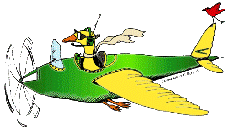Bird Strike Committee Proceedings
Date of this Version
10-24-2002
Abstract
Human-wildlife conflicts arise under a variety of circumstances and working environments. No one could have predicted the unique working environment created by events surrounding 11 September 2001. At the request of the New York City Police Department (NYPD), the Port Authority of New York and New Jersey (PANYNJ) and the New York State Department of Environmental Conservation, a team of USDA, APHIS, Wildlife Services (WS) biologists mobilized in less than 24 hours to assist officials from the NYPD, PANYNJ and the Federal Bureau of Investigation in managing birds and rodents impacting the recovery of evidence as a result of the terrorist attacks on the World Trade Center. During the 9-month recovery effort from September 2001 to June 2002, more than 1.7 million tons of debris were shipped from “Ground Zero” in Manhattan, to a high-security crime scene at Fresh Kills landfill (FKL), Staten Island, New York. Close to a billion pieces of debris were sorted by law enforcement officials to recover personal effects, human remains and other evidence to document the crime and identify victims as part of the largest forensic investigation in the history of the USA. Within days of bringing debris to FKL (which had closed in February 2001 and was reopened after September 11), more than 2,600 gulls (Larus spp.) were landing and harassing law enforcement officials, making an already difficult work environment more difficult and creating a concern that evidence would be lost to birds. FKL has been a traditional feeding and loafing site for gulls and other birds (e.g., WS biologists estimated at least 100,000 gulls at FKL in November 1986), indicating a very real threat that local bird populations could increase significantly as the operation progressed. To address this unique wildlife damage management problem, WS implemented an integrated bird and rodent damage management program that eventually involved more than 66 biologists from 24 states. The goal was to reduce the impact of gulls, crows (Corvus spp.), house mice (Mus musculus) and Norway rats (Rattus norvegicus) on law enforcement personnel, equipment and evidence collection. A zero-tolerance policy for gulls and crows landing on the working face was implemented to meet our objective of minimizing the risk of loss of evidence to wildlife. A combination of population surveys and direct management activities targeting gulls and crows was initiated 12-14 hours/day, 7 days/week using visual and noise deterrents including pyrotechnics, mylar tape, human and dead-bird effigies, lasers, paint-ball guns, and lethal removal of a limited number of birds. In addition, bi-weekly rodent surveys with snap traps were conducted to document population trends and explore the need for rodent control on site. We describe the evidence recovery process; the subsequent need, implementation, and efficacy of a bird and rodent management program to protect forensic evidence; and key lessons learned regarding an emergency response program to manage wildlife. Our findings are relevant to airports, waste management facilities, and other sites attempting to establish zero tolerance for birds and other wildlife that are hazardous to human health and safety.

